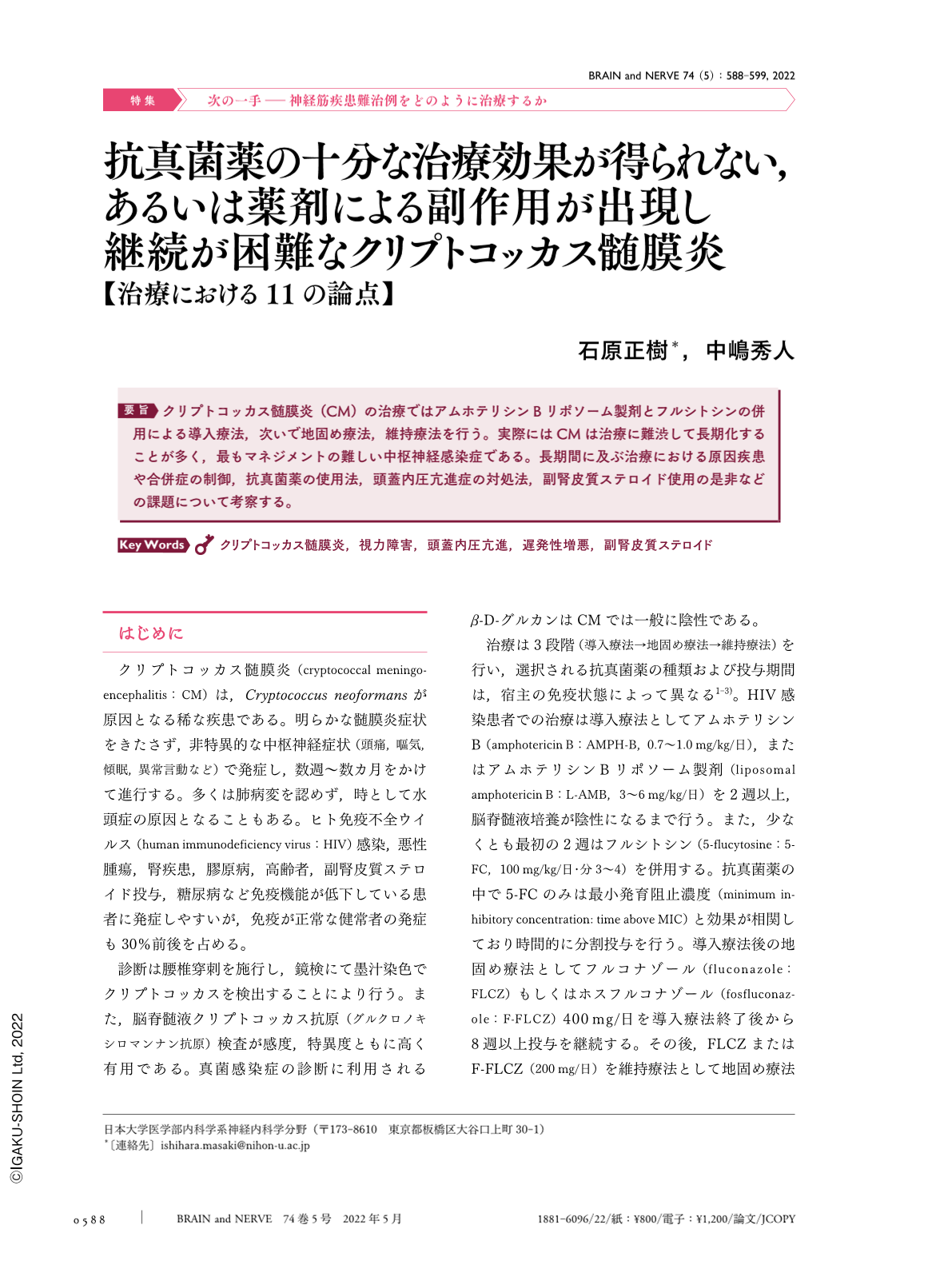Japanese
English
- 有料閲覧
- Abstract 文献概要
- 1ページ目 Look Inside
- 参考文献 Reference
クリプトコッカス髄膜炎(CM)の治療ではアムホテリシンBリポソーム製剤とフルシトシンの併用による導入療法,次いで地固め療法,維持療法を行う。実際にはCMは治療に難渋して長期化することが多く,最もマネジメントの難しい中枢神経感染症である。長期間に及ぶ治療における原因疾患や合併症の制御,抗真菌薬の使用法,頭蓋内圧亢進症の対処法,副腎皮質ステロイド使用の是非などの課題について考察する。
Abstract
Cryptococcal meningoencephalitis is mainly caused by Cryptococcus neoformans and accounts for 90% of fungal meningitis cases in Japan. Cryptococcal meningoencephalitis is a rare disease, and similar to tuberculosis meningitis. It often exhibits subacute or chronic progression symptoms such as headache, fever, coma, personality changes, and memory disturbance. Cryptococcal meningoencephalitis often develops in immunosuppressed hosts, but can sometimes occur in healthy individuals, and the mortality rate is 10-25%, indicating a poor prognosis. For the treatment of cryptococcal meningoencephalitis, introduction therapy using a combination of liposomal amphotericin B and flucytosine is recommended. However, in practice, cryptococcal meningoencephalitis is refractory and often requires prolonged treatment; therefore, it is the most difficult to treat among the central nervous system infections. We discuss the following 11 issues: I.Sustainability of first-line treatments, II.Treatment options in case of decreased renal function, III.Association with increased intracranial pressure IV.Causes of visual impairment, V.Necessary steps when symptoms/laboratory findings worsen during antifungal treatment, VI.Cerebral infarction, VII.Difficulty in controlling underlying and comorbid diseases, VIII.Indications for lumbar and ventricular drainage (Ommaya reservoir placement), IX.Pros and cons of concomitant use of corticosteroids, X.Treatment evaluation index: usefulness of head MRI, and XI.Determining the end of treatment and the need for preventive medication.

Copyright © 2022, Igaku-Shoin Ltd. All rights reserved.


